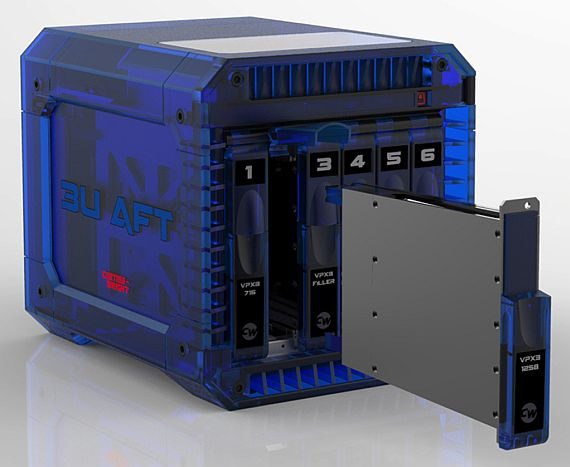
Authored by John Keller, Editor of Military & Aerospace Electronics
Today's high-performance processors are generating more heat than ever before, which forces embedded computing designers to take a systems approach that makes thermal management just as important as processors, circuit cards, and chassis.
Designers of high-performance embedded computing (HPEC) systems are up against a wall of heat that comes from a cascade effect of customer demands for ever-smaller size and higher performance. Typically these two factors - small size and high performance - conspire to create unprecedented amounts of heat in HPEC systems, which if not managed properly can slow down systems, reduce product life cycles, or risk catastrophic failures in military mission- and life-critical systems.
As a result, systems designers have to take much more of a high-level engineering approach than they had to 10 or 15 years ago. Electronics thermal management isn't just about blowing air or conducting heat anymore. Systems designers must consider using exotic and proprietary cooling techniques, a widening variety of standardized cooling approaches, and sometimes blending several different cooling techniques in the same system to achieve size and performance goals. At a minimum, designers no longer can consider thermal management as an afterthought.
"I've been doing thermal management for the last 20 years, and thermal engineers need to be more multidisciplinary now; know size, weight, power, and cost (SWaP-C) approaches; and work more closely with the processor designers," says Ivan Straznicky, technical fellow in the strategic planning office of the Curtiss-Wright Defense Solutions in Ashburn, Va....

This 3D-printed, air-flow-through cooled chassis from Curtiss-Wright is lightweight enough for fixed-wing aircraft and helicopters that require high-performance embedded computing.
Getting the heat out
Removing heat from embedded computing cards and chassis, at least in theory, is limited only to the designer's imagination. Embedded systems designers can use forced air, heat conduction, a variety of liquid cooling approaches, and even refrigerated air conditioning to get heat off the cards and out of the box. Sometimes a combination of all or several of these alternatives can meet the challenge.
Practical considerations, however, quickly narrow down the designer's options. The customers who specify embedded systems have stringent requirements for small size and weight, low power consumption, and competitive pricing. This can make for a tricky balancing act.
Making the wrong choices could be disastrous. Design something that runs too hot, and processors start to throttle-back, which compromises performance. Overheated embedded systems also can cause maintenance headaches when heat-stressed components wear out more quickly than anticipated. Worse, heat can cause system failures at the worst possible times.
Read the entire article on Military & Aerospace Electronics